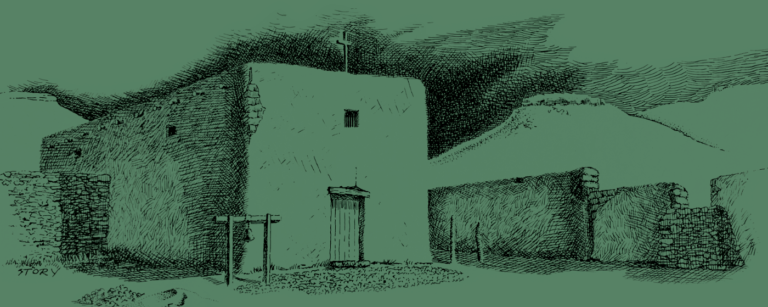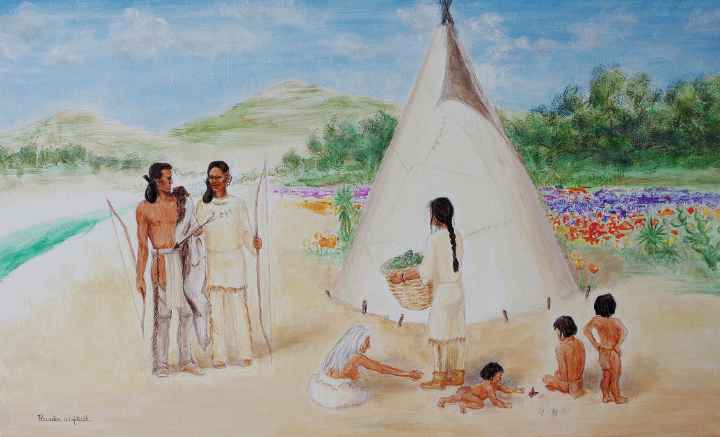Resisting the Faith





The Lipan also occupied some of the buildings while others camped outside the compound.
For the Lipan, the mission served as a temporary refuge or place to acquire food when available. The Indians came and went throughout the year to hunt bison or harvest prickly pear cacti.
While at the mission, the Lipan were expected to follow a strict routine that included daily mass, religious instruction, chores, labor in the fields, and vocational training. To aid these efforts, Christianized Tlaxcalan groups from Mexico were brought in by the Spanish to serve as examples to the Lipan. Nevertheless, efforts to convert the Lipan were complicated by their refusal to live at the mission permanently.


Sketch of northwest corner of mission looking west, from 1969 report
The Tlaxcalan converts labored in the fields and helped to build the acequias (irrigation canals) used to water the mission crops. Given the reluctance of the Lipan to settle at San Lorenzo, the work of the Tlaxcalans was vital for the daily operations of the mission. Food shortages were common and the missionaries struggled to feed the mission population.
Information about the mission diet comes from archival and archaeological data. These data show that sheep, goats, cattle, chickens, and pigs were brought to the mission. Local game including deer, rabbits, freshwater fish, and birds supplemented the diet and were likely obtained by the Lipan. Old World spices were also purchased in Mexico along with sugar and chocolate. In addition, corn, squash, and melons were planted with some success.
